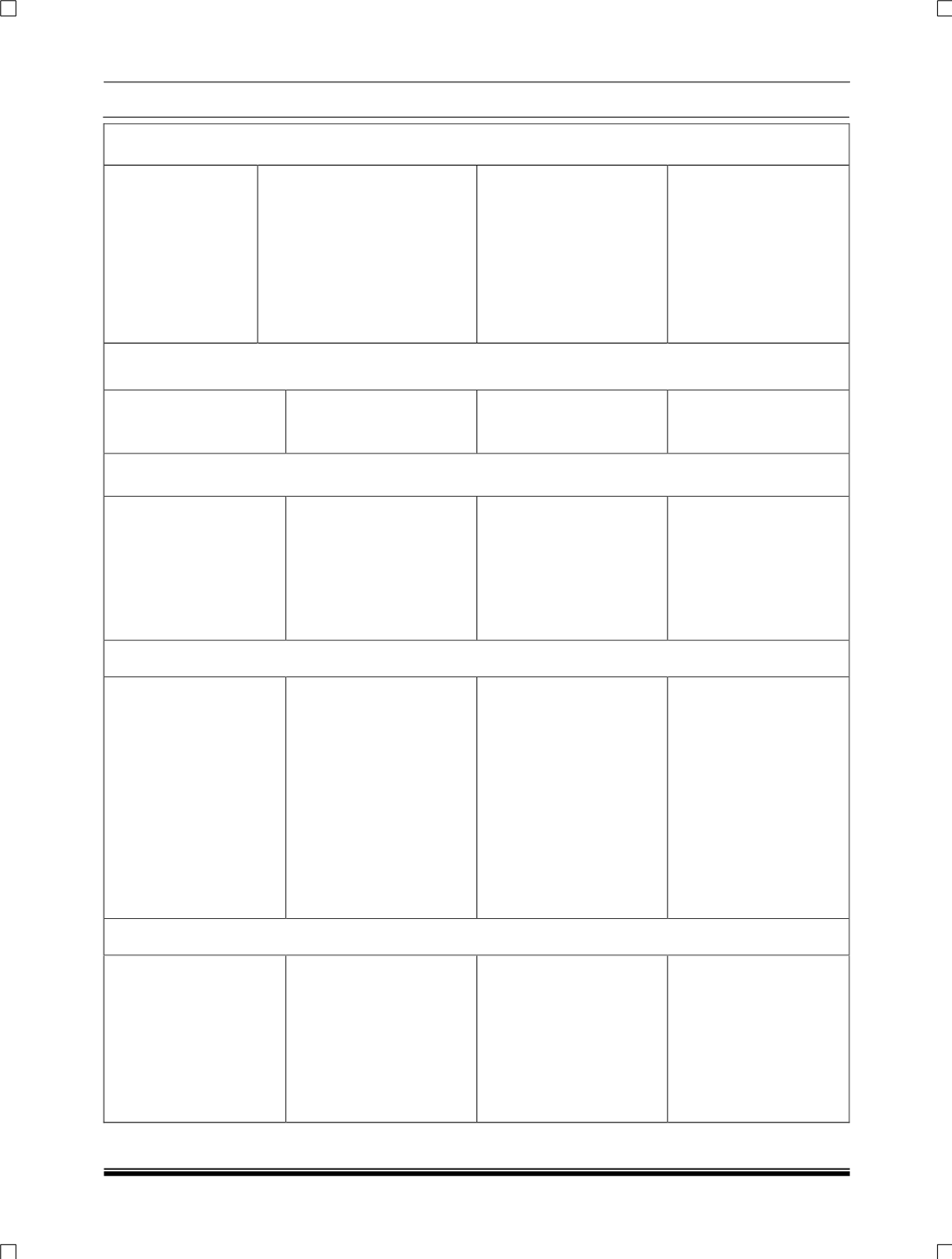

DRIVETRAIN-TA65 Star
15
5. Juddering During Pulling Away
Loss of Drive
The friction material has
come off from both sides
(centrifuged). The facing has
centrifuged. The shattered
linings are lodged into cover
assembly and loose in the
bell housing. Some parts of
the driven plate could be
broken.
Drive error – e.g.
accidentally
changing
from 5
th
to 2
nd
gear at 85
miles per hour.
6. Vibrations through the Pedal When Starting to De-clutch
Pedal vibration when
starting to De-clutch.
The fingers of diaphragm
are out of line and show
sign of damage.
The gearbox input shaft
has struck the fingers of
the diaphragm on fitting.
Carefully guide in the
gearbox to avoid any
knocks on fitting.
7. Metallic Sound with Pedal Fully Depressed
Metallic sounding noise
affected by engine
speed with pedal fully
depressed.
Signs of rubbing on the
diaphragm fingers, in the
area of contact with the
release bearing.
Incorrect clutch
adjustment excess
travel.
Systematically check
the condition of cable
linkage and automatic
adjuster.
Always refer to vehicle
workshop manual for
correct adjustment.
8. Excessively Heavy Pedal
The pedal is hard to
depress. This stiffness
increases overtime.
The
tips
of
the
diaphragm fingers are
worn away by the
release bearing. The
bearing can appear to be
in good condition.
The pre-load on the
release bearing is too
low or not existent. The
pre-load
spring
is
unhooked.
During
clutch
installation thoroughly
inspect all linkages and
joints. Ensure that the
clutch cable is smooth
and free throughout its
movement.
Always
refer
to
vehicle
workshop manual for
correct adjustment. The
pre-load should be
minimum of 50 N to a
maximum of 80 N.
9. Noisy Clutch
The clutch is noisy and
the pedal cab be slack.
A location lug on the
release bearing has
broken.
A lug has broken.
Another fault in the
mechanical operation of
the lug to break. For
example, the fork is out
of shape or wrongly
positioned at the time of
assembly.
Check the fork and
guide
sleeve
and
replace if signs wear
are present. Ensure
components
are
lubricated.
Carefully
check at the clutch
cable.










